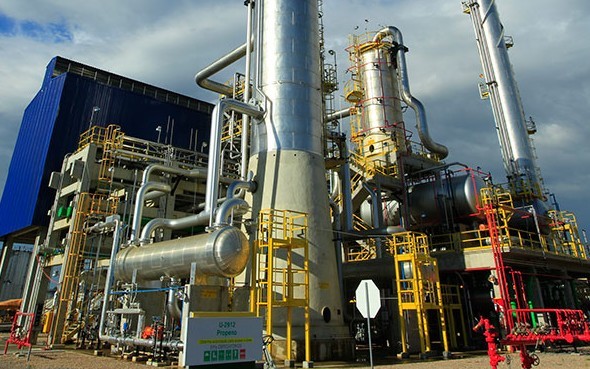
Big Oil is suddenly Big Chemical.
For years, the business of turning gas and oil into the chemicals used to make everything from plastic bags to paint has been a mostly unloved corner of the world’s largest oil companies. Now, it’s shining, cushioning companies from Exxon Mobil to Shell from the worst energy price slump in a decade.
“Chemicals are coming back onto the radar screen,” Simon Henry, chief financial officer at Shell, Europe’s largest oil company, said on Wednesday.
In good times, when high oil and gas prices deliver billions of dollars in profits, the chemical business is largely a footnote in the profit and loss account. Today, with most major oil companies losing money in their production and exploration units, petrochemicals have become one of the biggest — if not the biggest — sources of income.
The petrochemical business is getting a lift from the very same factor weighing down the production and exploration units: low oil and gas prices. Effectively, cheap energy translates into cheap raw materials and higher margins.
“Petrochemical has been doing very well, actually,” Total CFO Patrick de la Chevardiere said last week.
Take Exxon Mobil. In the first quarter, the chemicals business accounted for nearly 75 percent of the $1.8 billion the company reported in profit. Between January and March, it made $1.36 billion producing chemicals such as ethylene and propylene. During the same period, it lost $76 million pumping oil and gas.
Two years ago, when oil traded above $100 a barrel during the first quarter of 2014, the chemicals business accounted for less than 13 percent of Exxon’s profit as the oil and gas business delivered $7.8 billion in profits.
In a show of how much oil companies are relying today on their petrochemical units, Jeffrey Woodbury, vice president of investor relations at Exxon, called the company’s chemicals business the “highlight” of the first quarter.
Shell made $377 million in chemicals in the first quarter, compared with adjusted net income during the same period of $1.55 billion.
The chemicals business has taken the baton from oil refining and trading, which performed strongly last year. While both businesses are still doing well, in the first quarter, refining margins fell significantly compared with the same period of 2015.
Across other major oil companies, including Total and BP Plc, the trend was similar — if not as extreme — during the first quarter. Chevron Corp., which shares its chemical business with Phillips 66 in a joint venture, benefited less.
“Strong petrochemical was the standout feature of the earnings, consistent with a trend from other Big Oil names this quarter,” Alastair Syme, oil analyst at Citigroup in London, said in a note to clients.
Shell said the margins in Asia from turning naphtha — a product of oil refining — into petrochemicals such as ethylene were 82 percent higher in the first quarter than a year earlier.
As oil and gas prices start to rise, petrochemical margins are likely to fall back. Yet, oil executives believe the strength of their chemicals businesses is deeply rooted. Demand for plastics in emerging markets remains strong despite the economic slowdown as more people move into the ranks of the middle class.
Perhaps more importantly, companies like Shell and Exxon have invested in new plants — or re-tooled existing ones — to profit from the abundance of a byproduct of the U.S. shale boom known as ethane. Rather than consume more expensive refined products such as naphtha as feedstock for their petrochemicals plants, they are using cheaper ethane directly.
Exxon started building in mid-2014 a multi-billion dollar chemical plant in Baytown, Texas, which will use ethane as its main raw material. Shell is using ethane for about two thirds of its chemical business in the U.S., moving away from naphtha.
“That has driven the better results for us,” Henry said.
Recommended for you
